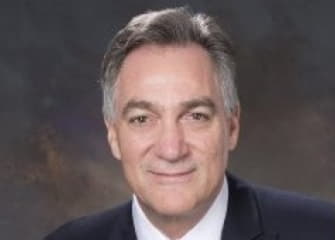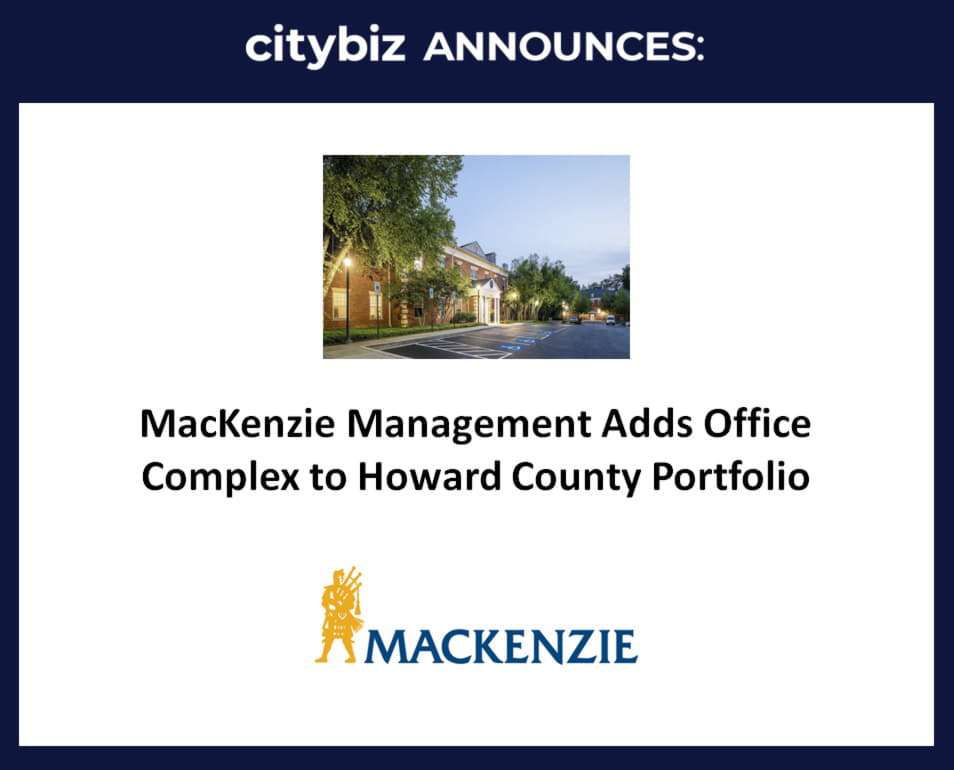
Jeffrey A. Galvin
Click here for Part II & Part III
Developing cures for HIV, PKU, and liver cancer with groundbreaking genetic medicines
Jeff Galvin is the founder and CEO of American Gene Technologies, a biomedical company focused on developing and commercializing genetic medicines. Over the past 10 years, AGT has developed a drug delivery platform that targets major lentiviral (from the Latin root lente-, meaning “slow”) diseases such as HIV/AIDS, Phenylketonuria (PKU), and liver cancer. This year, the company will begin a Phase I human trial for its functional HIV cure, potentially solving one of the greatest health crises in the world. According to Jeff, curing HIV is only the beginning for this revolutionary new technology.
Jeff Galvin spoke to Guy Flynn, a partner at DLA Piper, for this interview.
GUY FLYNN: You have had an amazing career, beginning in some respects with having taught an MIT when you were in high school. Talk to us a little bit about your career evolution from then to becoming the founding CEO of American Gene Technologies.
JEFF GALVIN: What drove me in my whole youth and in my career development were things that I fell in love with. When I was in the seventh grade, I saw a teletype terminal that was donated to our school by Bolt Beranek & Newman, a timeshare company. These things are all ancient terms, which you shouldn’t know anything about—all those things have disappeared at this point—but it was an opportunity to learn how to program computers. I got an independent study at my high school and I learned how to program in a language called Logo. It was my first experience with computers, but I was just smitten. I just loved computers not because I love to program, but I loved what I can see that they could do. I really saw these things as taking away all the rote, boring activities of adding numbers and formatting things, and I could just see an amazing future in these new things that I just experienced—computers.
I was, at that point, 13, 14 years old. My father went to MIT and I’d been to some open houses, so I was comfortable on the campus and I just started wandering around looking for computer resources that I could use. That’s where I got exposed to robots and ADD conversion that would go ahead and allow you to add sensors to computers that can sense the temperature or whatever, and then I realized, “okay, there’s no limit to what computers are going to do.” While wandering around the halls of MIT, I bumped into something called the High School Studies Program and they asked me if I would like to take classes on weekends, because they had people that were teaching classes for high school students in the area. I looked at what they were offering and there was nothing in computer science, so I asked them, “Could I teach a class in programming BASIC. They just looked at me, this little 15-year-old, and they were like, “Well, show us a syllabus.” So, I went home and went to the library and looked up what a syllabus was, and I presented one to them and they liked it. They gave me resources and a classroom on the weekends and I had high school students and college students coming into my class to learn how to program in BASIC. That was my first experience teaching.
After high school I went to Harvard. In the first year I was a very experienced computer person, very excited by it and passionate about it, and so I went through all of the curriculum in the first year, and aced out at everything that you could do in computer science at Harvard at that point. And then I was interested in teaching again, and I got a position as a teaching fellow for Natural Sciences 110, which was the beginning of computer science class—sort of the get your science requirement out of the way if you’re a non-science person—and it was the second biggest class on campus, and I guess I was showing so much passion and excitement and dedication to being a TF that the professor made me head TF. I even got to give lectures to full 1,200 students whenever the professor was out of town and run an organization of about 30 teaching fellows. That was really great experience that I loved.
Again, my whole life I just kept on pursuing what I loved. Next thing, next stop is I get recruited by Silicon Valley. That makes sense with a computer background. I went to HP, and HP really was about the programming, and so it didn’t really light my fire the same way. I ended up shortly thereafter at Apple, and then I got the fire in my belly for computers again. I, probably like a lot of people, had thought that microcomputers were too small to do anything serious, but when I saw what Apple was focusing on, I realized that wasn’t the case—that that was going to be something that had a huge future.
Also, they had an attitude about this thing that really matched mine, which is that computers are tool. They’re not an end in themselves; they’re basically something to enhance people’s lives. Steve Jobs always called it “the bicycle for the mind,” and that was the way that I felt about computers. You don’t have computers because you just like computers. You have computers because they do things for you that are worth a lot more than you spend on computers, and utility and accessibility and usable power was what Apple was all about.
Anyway, that lit my fire in terms of entrepreneurship. I had a couple of startup companies. Some of them did well; other ones didn’t lose so much money that it undid the ones that did well. I was in Silicon Valley investing in real estate as well, and I ended up retiring at about age 40, 41. If you can imagine this, I got bored of leisure time and I wanted to dabble again. People found out I had money and I started getting business plans over the transom—potential investments—and that sounded like a good way to get back into business without being 24/7 again.
One of the things that I got was an introduction to Roscoe Brady at NIH. He showed me viral vectors, and I immediately had the same excitement and vision for a future of viral vectors that I had the first time that I saw a computer. I fell in love with it and that’s what driving me right now. I think this is an amazing technology: the utility for human beings, the potential of improving people’s lives—of mitigating diseases that heretofore were completely unaddressable by traditional drug development. It’s all there. Ten years ago I could see it, the moment that Roscoe Brady explained to me what viral vectors could do. I said, “This is the operating system for the human computer.” The human cell is nothing but an organic computer to me. Runs on DNA, which is coded in ACTG—that’s not that different than computers that run in binary, which is coded in 0s and 1s. You can think of ACTG as base-4. It’s all just numbers, and these genes are just commands to the machine. And if we can change those commands, we can change anything. If we can get in there and we can work on the DNA, I know that’s a source of a lot of problems and it’s also a solution to a lot of problems. I saw this amazing future clearly laid out in front of me and I just had to get involved, and that’s what’s driven me for the last ten years, and that vision is really playing out.
GUY FLYNN: Tell us a little more about Dr. Brady and his amazing background as a scientist, and how the two of you came to co-found AGT—and a little bit about your relationship personally with him.
JEFF GALVIN: Dr. Brady was an amazing man—just brilliant, recognized in the field, highly decorated—even a commercial success. He was the person who discovered the root cause of Gaucher’s disease, which is a horrible disease where people cannot metabolize lipids in their organs and their organs swell over time and they burst, so they die of basically organs that just swell up with lipids that can’t be processed. He discovered that they were missing an enzyme called glucocerebrosidase. He figured out a way to get it back into the necessary cells, and he made a cure for Gaucher’s disease, and out-licensed that to Genzyme that sold a billion dollars a year extending people’s lives with this new technology. In terms of a scientist, [he was] an amazing guy, an amazing researcher, and incredibly passionate about helping people.
I’ve got to say, personally, he’s just the most down to earth and gracious person you will ever meet. He didn’t know me from Adam, and I walked into his office and he just treated me like I was a some sort of peer and he was going to explain to me what he knew. And he explained it so well that it was easy for me to understand it right away and I just said to him, “Somebody’s going to have to be the Microsoft to this industry. It might as well be us.”
Now he was retiring, so he couldn’t really jump into something full-time. He was already I think in his late 70s when I met him, and so he wasn’t going to kind of go back to the bench and go to work and be that kind of co-founder, but he was a cheerleader. He was our inspiration. He was somebody that gave me great confidence in the future of viral vectors during those early years, and he supported my vision for what this could become, as well as always lending a guiding hand whenever he could. He’s still a continuing inspiration around the company and we miss him greatly. He passed away June 13, 2016—a big loss for the community and especially for us, but we’re going to continue the work that he started at NIH. I think this is going to turn into something really amazing and important and significant, and he was a big factor in that.
Connect with Jeffrey on LinkedIn


Edwin Warfield, CEO of citybizlist, conducts the CEO Interviews.
If you're interested in reaching CEOs, please contact edwin.warfield@citybuzz.co
Connect on LinkedIn


































